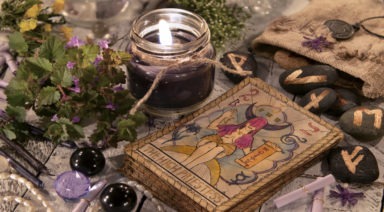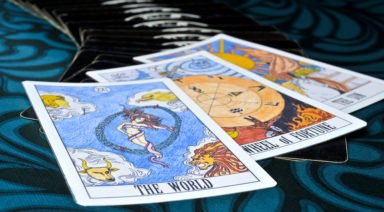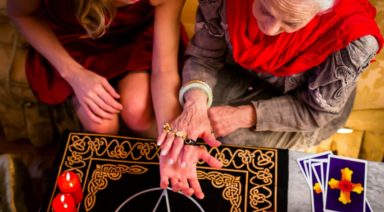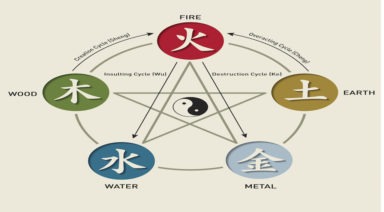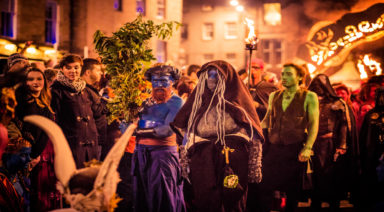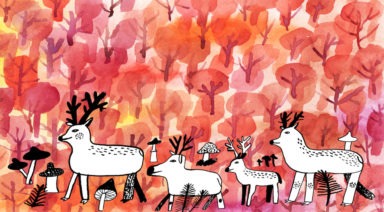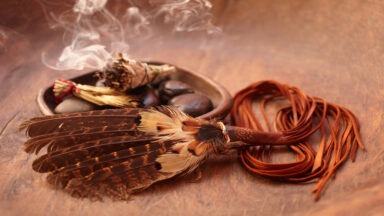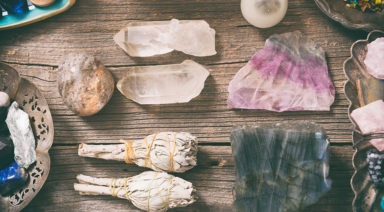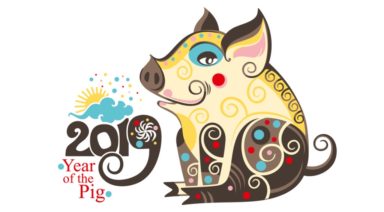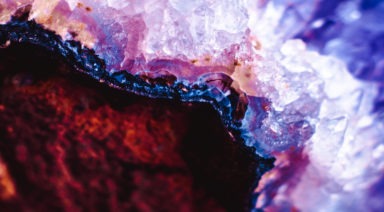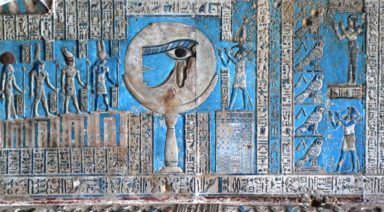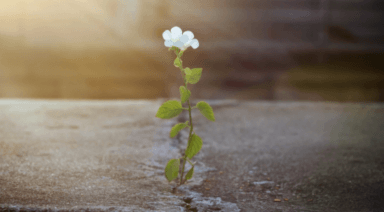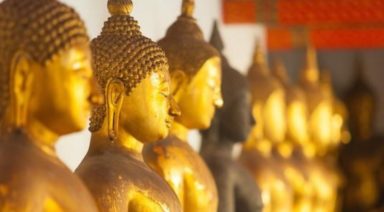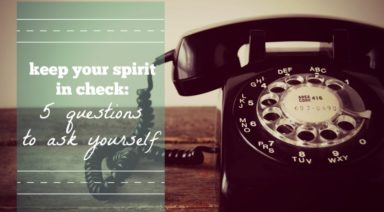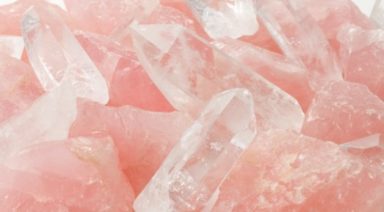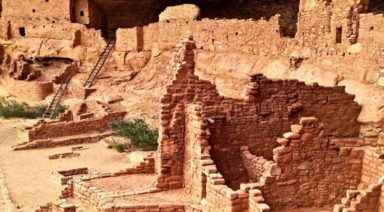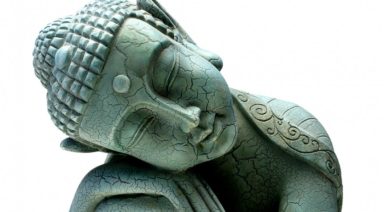How to Use the Chinese Magic Square — The Lo Shu
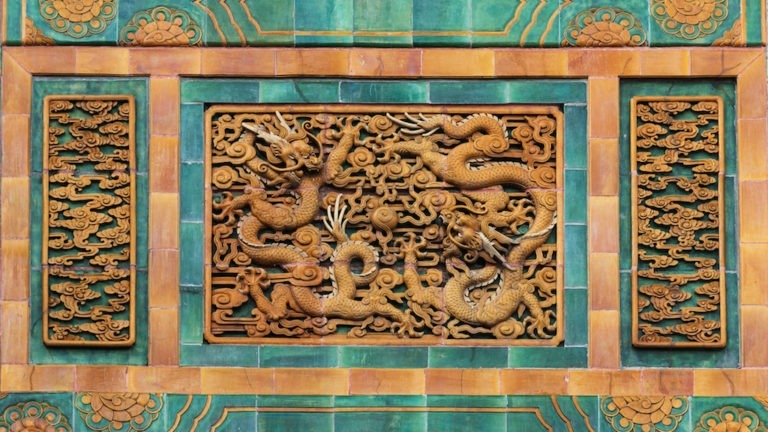
Thousands of years ago in China, the Lo River flooded, inundating the local population. The people were desperate, and frantically made offerings and sacrifices to the river god, asking him to return the water to its banks.
Suddenly a turtle surfaced on the river. The people saw that there was a pattern on its shell, a grid of nine squares. Each square had dots adding up to numbers. No matter which way the dots were added across the rows either diagonally, vertically, or horizontally, the sum was 15. The diagram was called the “Lo Shu,” or “Lo River Writing.”
The turtle gave the people the pattern on its back as a map or grid of the natural flow of chi and the elements, and this square with its numbers became a foundational tool in Feng Shui and Taoist traditions. The square is also carried as an amulet or placed in homes and offices as a protective charm.
Want to learn more about Feng Shui? Watch this full-length video free!
How to Use the Lo Shu
Find Missing Elements by Birth Date: By laying the numbers of someone’s day, month, and year of birth over the corresponding magic square numbers, one can see which elements are missing — those squares with no corresponding numbers in the birth date indicate elemental imbalances. Just drop out any zeros — there is no corresponding Lo Shu sector for zero.
These elements can be emphasized by using corresponding colors in home decor, clothing, and jewelry choices. If, for instance, there are no fours in the birth date, the four square in the Lo Shu will be under-emphasized. Remedies would include wearing purple or placing purple objects in the far left corner (if looking from the front door) of the home, office, and individual rooms. Since the element is Wood, keeping a healthy plant in that area will also help bring the lo shu into balance. Additional remedies are listed below.
Find Missing Elements in the Home: Look at the Lo Shu and imagine that the black, one square is laid over your front door. Then imagine the grid stretching to overlay the rest of the structure — since few of us live in perfectly square homes, there will likely be empty areas. It’s important to imagine the grid stretching to the very back wall of the structure as well. The grid may also be overlayed on an individual room, with the entrance doorway at the black number one square. Don’t worry about actual compass directions — in the Lo Shu square, the north is always on or near the main entrance.
If the larger structure has missing elements, those can be emphasized by placing the appropriate remedies within individual rooms in the house. For instance, if there is no “structure” in the far left back four corners, purple amethyst or flowers may be placed in those sectors of an individual room. In addition, “empty” or “missing” spaces may be remedied by planting a garden or placing a water feature in the area.
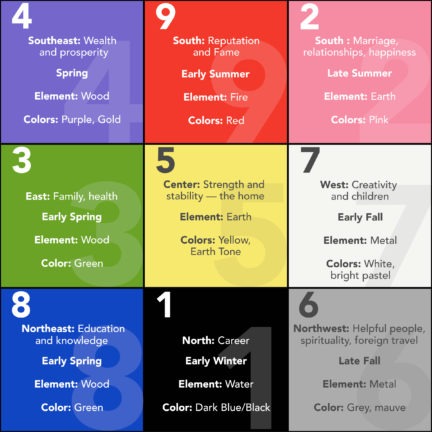
Below are the qualities and rulerships of the squares in the Lo Shu.
1 = North: Career. Season: Early Winter. Element: Water. Colors: Dark Blue/Black
2 = Southwest: Marriage, relationships, happiness. Late Summer. Element: Earth. Color: Pink
3 = East: Family, health. Early Spring. Element: Wood. Color: Green.
4 = Southeast: Wealth and prosperity. Element: Wood. Colors: Purple, Gold.
5 = Center: Strength and stability — the home. No season. Element: Earth. Colors: Yellow, Earth Tones.
6 = Northwest: Helpful people, spirituality, foreign travel. Late Fall. Element: Metal. Colors: Grey, mauve.
7 = West: Creativity and children. Early Fall. Element: Metal. Colors: White, bright pastels.
8 = Northeast: Education and knowledge. Late Winter. Element: Earth. Colors: Blue, blue-green.
9 = South: Reputation and Fame. Early Summer. Element: Fire. Color: Red.
Below are additional personal and space remedies for missing elements and directions.
- This Northern square is the water element. Balance the element by adding a water feature — even a small bubbler — an aquarium, or an image of flowing water. Ever notice the aquariums often seen near the front door of Chinese restaurants?
- The Southwest square is the earth element, and the color is pink. This section has to do with love and relationships, so placing paired objects here can help — traditionally, the Chinese will place a pair of cloisonne mandarin ducks in this sector as these birds mate for life. Rose quartz can be placed, and pink stones can be worn to balance the lo shu.
- The green sector is East and is related to the wood element. If additional support is needed, use green plants and wooden objects. Wearing green and carrying a wooden pen are also recommended.
- The Southeast, colored purple, is also wood, but use purple here. Purple live or silk flowers, amethyst crystals, or fabrics can help balance the chi here as well as wearing purple clothing and amethyst jewelry.
- This is the center — the earth. Traditionally, images of mountains without water are used, and wearing crystals in any form or shape is recommended. Also, crystal chandeliers or balls are suggested.
- The Northwest is occupied by the metal element — enhancing that chi with metal in some form is suggested, particularly gold-colored metals. Wearing gold is recommended, as well as hanging a gold-toned metal windchime with six rods or pipes.
- This Western sector is also metal but relates more to silver colors. Wear a silver watch or chain, and install a silver-toned wind chime with seven rods or tubes.
- The Northeast is occupied by the earth element. The color is blue, and crystals are used to balance chi here, in the form of jewelry or decor.
- The South is the fire element. Wearing red, putting a red light bulb in any fixtures in this section, or installing a wood-burning or gas fireplace are all possible remedies.
Watch this episode of Beyond Belief featuring Feng Shui specialist Kelly S. Jones:
Tarot's White Magic: Positive Incantations and Rituals For Change

The key to improving our lives is remaining positive and continually invoking love, light, faith, and hope. Prayers, rituals, and incantations can help us with this, which in turn, helps us live in gratitude and improve our vibrations.
When our vibrations are elevated, we become better-protected and tend to attract positive and helpful relationships and experiences. Tarot can be a vital and enlightening tool in this pursuit.
Tarot was originally a card game popularized in the 15th century Italy, which spread to every country in Europe. While the original Tarot decks were broad enough to be familiar to anybody, various regions developed their own versions. Over time, Tarot decks could have anywhere from 52-98 cards, most often between 52 and 78. For years, Tarot was also known as Trionfi, Tartocchi, and Tarock.
During the 1800s, tarot cards became useful in prayers, spells, rituals, incantations and other forms of divination. By the late 19th century, specific versions of Tarot decks were produced strictly for spiritual and occult practices.
“Remember that the Tarot is a great and sacred arcanum – its abuse is an obscenity in the inner and a folly in the outer. It is intended for quite other purposes than to determine when the tall dark man will meet the fair rich widow.”


